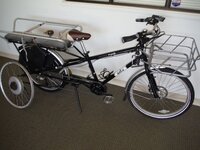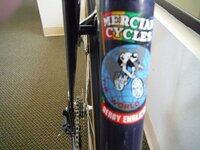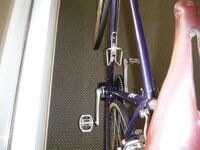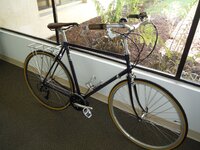You are using an out of date browser. It may not display this or other websites correctly.
You should upgrade or use an alternative browser.
You should upgrade or use an alternative browser.
- Status
- Not open for further replies.
Maybe because that's all they see. If you only watch Fox news for instance (and many do) you won't get much encouragement to get vaccinated. Quite the opposite in fact. Those guys still think Trump is President.Okay so I am the man from mars here . No FB, no TV, ( few magazines or books by living authors ) Hyper sensitive to Ads etc. Why not discuss why people believe FB over other sources... news sites, or their own lived experiences in cases .
DaveMatthews
Dave's not here. Cheating since 2018
- Region
- Canada
Too many people don't want to think for themselves.
It's easier to go along with the radio/tv/FB channels that they chose.
Critical thinking be damned.
It's easier to go along with the radio/tv/FB channels that they chose.
Critical thinking be damned.
After Sherri Tenpenny, a Cleveland-area doctor, falsely suggested during a hearing last month in the Ohio House of Representatives that COVID vaccines left people “magnetized” and could “interface” with 5G cellular towers, Republican lawmakers thanked her for her “enlightening” testimony.
J.R.
Erstwhile
- Region
- USA
The law of unintended consequences. It's the beginning of the end of free speech when any one political party controls speech. The next party is waiting in the wings to outlaw speech they don't like.
First they came for the Communists
And I did not speak out
Because I was not a Communist
Then they came for the Socialists
And I did not speak out
Because I was not a Socialist
Then they came for the trade unionists
And I did not speak out
Because I was not a trade unionist
Then they came for the Jews
And I did not speak out
Because I was not a Jew
Then they came for me
And there was no one left
To speak out for me
- Lutheran Pastor Martin Niemöller
Germany WWll
First they came for the Communists
And I did not speak out
Because I was not a Communist
Then they came for the Socialists
And I did not speak out
Because I was not a Socialist
Then they came for the trade unionists
And I did not speak out
Because I was not a trade unionist
Then they came for the Jews
And I did not speak out
Because I was not a Jew
Then they came for me
And there was no one left
To speak out for me
- Lutheran Pastor Martin Niemöller
Germany WWll
Here's one of the best written pieces regarding covid vaccination that I've seen yet:
We live in ignorant times.
By now, surely this is obvious beyond argument to anyone who’s been paying attention. From the Capitol insurrectionist who thought he was storming the White House to Sen. Tim Scott’s claim that “woke supremacy is as bad as white supremacy” to whatever thing Tucker Carlson last said, ignorance is ascendant.
Yet, even by that dubious standard, what happened recently in Tennessee bears note. According to a story by Brett Kelman of the Tennessean newspaper in Nashville, the state, under pressure from Republican lawmakers, fired its top immunization official, Dr. Michelle Fiscus, and shut down all vaccine outreach to young people. Fiscus’ sin? Doing her job, working to increase access to the COVID-19 shot among kids.
Specifically, she sent a letter to healthcare providers reminding them that under the state’s “Mature Minor Doctrine,” they are legally allowed to vaccinate children 14 years or older without parental consent. According to Fiscus, the letter, written in response to requests for guidance made by those administering the shots, utilized language drafted by an attorney for the department of health and was vetted by the governor’s office.
All that notwithstanding, it infuriated some state lawmakers. They used words like “extreme disappointment” and “reprehensible” and talked of closing the health department. Some anonymous person even sent Fiscus a dog muzzle. Then she was fired, and the state shut down all vaccine publicity efforts targeting young people.
This means no postcards sent out to remind kids to get their shots, no nudges on social media, no flyers or advertisements, no events at schools, no outreach whatsoever. And not just for COVID, mind you, but for everything — measles, mumps, tetanus, diphtheria, hepatitis, polio.
In a pandemic.
In a state with a less-than-stellar COVID vaccination rate.
At a time when experts are tracking the rise of a deadlier new COVID variant.
It is hard to imagine behavior dumber, more dangerous, more short-sighted and more downright bass-ackward than that exhibited by Tennessee and its lawmakers.
Which is, unfortunately, right on brand for this country in this era. It was in the 2000s that Stephen Colbert coined the term “truthiness” to describe the right wing’s secession from objective fact, and some of us began to speak of them as living in an “alternate reality.” How, we wondered in newspaper columns and speeches, can we have meaningful discourse if we cannot agree on basic facts?
Years later, that concern feels too abstract. The threat turns out to be more visceral and urgent than any of us could have imagined. Yes, some people live in alternate realities. What’s worse, though, is when they have power to impose those realities on the rest of us. That’s what we’re seeing in Tennessee and elsewhere, and the results will be as tragic as they are predictable and preventable.
Ignorance is bliss, they say. But it isn’t.
Ignorance is fever.
Ignorance is chills.
Ignorance is trouble breathing.
Ignorance is an empty seat at the table, a bedroom come suddenly available.
Because ignorance is death.
And while the aphorism isn’t true, can you imagine if it were, if ignorance really were bliss? Disney theme parks would have to find a new slogan.
Right now, Tennessee would be the happiest place on Earth.
We live in ignorant times.
By now, surely this is obvious beyond argument to anyone who’s been paying attention. From the Capitol insurrectionist who thought he was storming the White House to Sen. Tim Scott’s claim that “woke supremacy is as bad as white supremacy” to whatever thing Tucker Carlson last said, ignorance is ascendant.
Yet, even by that dubious standard, what happened recently in Tennessee bears note. According to a story by Brett Kelman of the Tennessean newspaper in Nashville, the state, under pressure from Republican lawmakers, fired its top immunization official, Dr. Michelle Fiscus, and shut down all vaccine outreach to young people. Fiscus’ sin? Doing her job, working to increase access to the COVID-19 shot among kids.
Specifically, she sent a letter to healthcare providers reminding them that under the state’s “Mature Minor Doctrine,” they are legally allowed to vaccinate children 14 years or older without parental consent. According to Fiscus, the letter, written in response to requests for guidance made by those administering the shots, utilized language drafted by an attorney for the department of health and was vetted by the governor’s office.
All that notwithstanding, it infuriated some state lawmakers. They used words like “extreme disappointment” and “reprehensible” and talked of closing the health department. Some anonymous person even sent Fiscus a dog muzzle. Then she was fired, and the state shut down all vaccine publicity efforts targeting young people.
This means no postcards sent out to remind kids to get their shots, no nudges on social media, no flyers or advertisements, no events at schools, no outreach whatsoever. And not just for COVID, mind you, but for everything — measles, mumps, tetanus, diphtheria, hepatitis, polio.
In a pandemic.
In a state with a less-than-stellar COVID vaccination rate.
At a time when experts are tracking the rise of a deadlier new COVID variant.
It is hard to imagine behavior dumber, more dangerous, more short-sighted and more downright bass-ackward than that exhibited by Tennessee and its lawmakers.
Which is, unfortunately, right on brand for this country in this era. It was in the 2000s that Stephen Colbert coined the term “truthiness” to describe the right wing’s secession from objective fact, and some of us began to speak of them as living in an “alternate reality.” How, we wondered in newspaper columns and speeches, can we have meaningful discourse if we cannot agree on basic facts?
Years later, that concern feels too abstract. The threat turns out to be more visceral and urgent than any of us could have imagined. Yes, some people live in alternate realities. What’s worse, though, is when they have power to impose those realities on the rest of us. That’s what we’re seeing in Tennessee and elsewhere, and the results will be as tragic as they are predictable and preventable.
Ignorance is bliss, they say. But it isn’t.
Ignorance is fever.
Ignorance is chills.
Ignorance is trouble breathing.
Ignorance is an empty seat at the table, a bedroom come suddenly available.
Because ignorance is death.
And while the aphorism isn’t true, can you imagine if it were, if ignorance really were bliss? Disney theme parks would have to find a new slogan.
Right now, Tennessee would be the happiest place on Earth.
PedalUma
Well-Known Member
- Region
- USA
- City
- Petaluma, CA
Yes, and more than that. To maintain 'engagement' the more you watch and participate the more extreme the offerings become, leading off to far fringes of echo chambers.Regarding FB…like other ‘social’ sites AI pushes more of the same old s*@t you first looked for…just as people go to news sites that confirm their bias’.
Hey, Green Room! Let's talk Green for a moment using a real example from today. A local Dr. has had a cargo bike for eight-years, riding it daily. He uses it for shopping and takes his daughters to school on it, then he commutes to work on it. The old BionX system - hub-drive - began to fail and was no longer supported. So, I updated it with a mid-drive and he rode it home today. The update is lighter and much more powerful. He will take the old parts to an e-waste drop off site. Nothing is 100% green. But, instead of driving a car all these years and instead of buying a new bike from all new resources he has made some thoughtful choices in the right direction.
Attachments
PedalUma
Well-Known Member
- Region
- USA
- City
- Petaluma, CA
Although I am not the type to reply to my own post here I am doing just that. Please forgive me.Yes, and more than that. To maintain 'engagement' the more you watch and participate the more extreme the offerings become, leading off to far fringes of echo chambers.
Hey, Green Room! Let's talk Green for a moment using a real example from today. A local Dr. has had a cargo bike for eight-years, riding it daily. He uses it for shopping and takes his daughters to school on it, then he commutes to work on it. The old BionX system - hub-drive - began to fail and was no longer supported. So, I updated it with a mid-drive and he rode it home today. The update is lighter and much more powerful. He will take the old parts to an e-waste drop off site. Nothing is 100% green. But, instead of driving a car all these years and instead of buying a new bike from all new resources he has made some thoughtful choices in the right direction.
This is a 1974 handmade bike from England. I just made it. It still has the original Campi rear hub. Now it is electric. The battery sits in the water bottle cage. The motor is between the pedals. That is re-cycling.
Attachments
Catalyzt
Well-Known Member
- Region
- USA
You know what that reminds me of? Before I got my early '70s Raleigh Competition, I had a 3-speed internal gear Raleigh that was made out of Reynolds 531-- it was a touring bike with straighter handlebars than that, but the way the rear tubes-- whatever that's called-- are flared and connect with the down tube, the thinness of the tubes, and the detail where they are welded-- it's not identical, but similar.Although I am not the type to reply to my own post here I am doing just that. Please forgive me.
This is a 1974 handmade bike from England. I just made it. It still has the original Campi rear hub. Now it is electric. The battery sits in the water bottle cage. The motor is between the pedals. That is re-cycling.
The gradual curve of the front fork-- lacking the distinct but soft angle of, say, a Peugeot UO8 or PX10-- reminds me of the Competition. That was a very unusual design at the time, meant to absorb a bit more bumps. This is why, I think, the Competition was regarded as a high-end touring bike, and not a racing bike.
Of course, I wanted a 10-speed like my friends, so the bike shop modded it with dropped handlebars and an Camp rear derailleur-- 9 speeds, three internal (coast to shift) and three external (pedal to shift.) My very (VERY) wealthy friend insisted I lock it in his basement after a long trip, I refused, he insisted, and said, "It won't get stolen, I'll pay for it if it does."
Well, it was 1970s New York, so it got stolen. He paid for it-- was as good as his word-- we were probably 12 or 13 years old, and we are still friends to this day.
That is stunning, I do wonder how much it weighs... I'm sure it's a rocket on pavement, but probably skittish as a colt on cracks, dirt, rocks, etc.
I'm going to be on the Competition in NYC in a month or so, so I'm riding the Trek a bit more to get used to having minimal suspension-- and it's a good thing to do, because I'm so used to the Moto that I'm hitting cracks and bumps pretty hard, so I've got to lose those full-suspension habits!
Art Deco
Well-Known Member
- Region
- USA
- City
- Selinsgrove Pennsylvania
This. The algorithm was written to sell you more of the same just like the ads that follow you around the internet. A big part of the echo chamber, right there.Regarding FB…like other ‘social’ sites AI pushes more of the same old s*@t you first looked for…just as people go to news sites that confirm their bias’.
Art Deco
Well-Known Member
- Region
- USA
- City
- Selinsgrove Pennsylvania
Anyway, another ( respectable) echo chamber NYTimes points out that bad weather doesn't respect borders...
Mulezen
Well-Known Member
Hydrogen has been in the news…saw two articles this week…a generating system has been paired with a floating wind turbine off Spain. The article also noted how important H is to present world economy (industrial). Also a new method /catalyst has been described. https://phys.org/news/2021-07-hydrogen-hard-major-hurdle.html
PedalUma
Well-Known Member
- Region
- USA
- City
- Petaluma, CA
@Catalyzt, We just weighed the electric 1974 Mercian, with its battery attached it is 37.5 pounds with the rack. I would not have weighed it if you hadn't asked. Weight distribution is one pound heavier in the front because I could not get the battery any lower. The design goal was 50/50 distribution and coming in at under 40 pounds.
Art Deco
Well-Known Member
- Region
- USA
- City
- Selinsgrove Pennsylvania
Not very optimistic about Hydrogen, myself... but if it is even able to replace just the heavy oil on giant cargo ships, that would be a big win. Everything else is gravyHydrogen has been in the news…saw two articles this week…a generating system has been paired with a floating wind turbine off Spain. The article also noted how important H is to present world economy (industrial). Also a new method /catalyst has been described. https://phys.org/news/2021-07-hydrogen-hard-major-hurdle.html
- Status
- Not open for further replies.
Similar threads
- Replies
- 15
- Views
- 5K
- Replies
- 3
- Views
- 4K
- Replies
- 0
- Views
- 2K
- Replies
- 30
- Views
- 13K
- Replies
- 20
- Views
- 6K




